Meet the Maker: Beth Grant
The East Garafraxa glass artist imbues her glossy beads with the colours and feel of the great outdoors, especially the expansive Far North.
Despite the biting cold outside artist Beth Grant’s cozy workspace at Orangeville’s Dragonfly Arts on Broadway on a recent January morning, the colours the artist is shaping into glass beads easily conjure up warm summer landscapes and long blue rivers. Indeed, Beth’s mind is never far from such natural beauty.
“Often, during the creative process, I am transported back to the sights and scenery of one of my northern canoe trips, and I find the shapes and colours reflected in my work,” she says of the beads that go on to become jewelry and other artful objects.
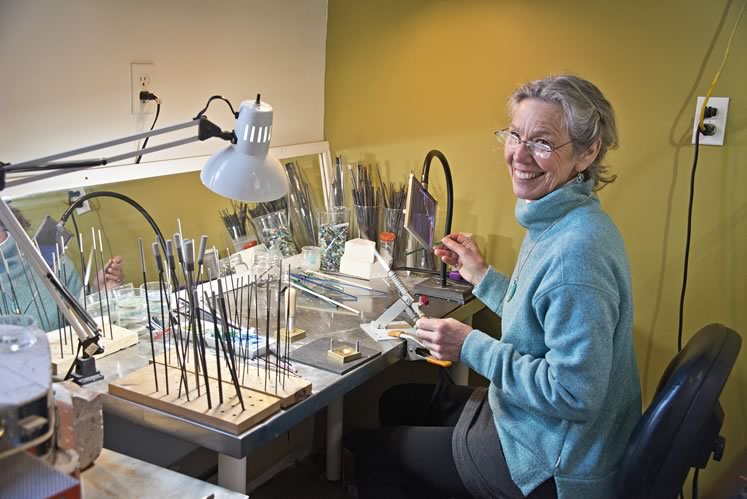
Artist Beth Grant creates lampwork beads at her worktable inside Orangeville’s Dragonfly Arts. Photo by Pete Paterson.
For the past 30 years, Beth – a mother and grandmother – has lived on seven acres of an East Garafraxa sugar maple bush backing onto the Grand River. Still, she says, “The farther north I travel, the happier I become.”
Beth attributes her passion for the North to an image of an iglu she saw in a book as a young girl. She built on that fascination during undergraduate studies at York University, when the department of biology offered the opportunity to join a field trip to what is now Nunavut. After that, she made the trek north for seven summers while in her 20s, earning a master’s degree in plant microbiology and conducting research for various universities and federal departments. As she studied the flora of the Melville Peninsula, the area that was the focus of her research, she immersed herself in the culture, colours and moods of the region.
Years later, Beth’s obsession would find an outlet in a modern take on the centuries-old Italian glass-blowing traditions of Murano, Italy. She had worked with stained glass for many years, but in 2005 she and her friend, Dragonfly Arts owner Joan Hope, rented torch time at a glass-blowing studio in Beaver Valley and started to experiment with making lampwork beads. Centuries ago the glass for these beads was heated over a small oil-burning lamp, hence the term “lampwork.”
“During the initial learning stages, our focus was so intense that Joan and I would drive home from Beaver Valley in a state of total exhaustion after spending just a few hours working with torches and glass,” says Beth. Now her time with the studio torch is a more meditative experience.
During my visit, Beth shows me how she routinely makes a bead. She begins with a mandrel, a stainless steel rod about nine inches long. The mandrel has been dipped into “bead release,” a liquid coating that keeps the glass adhered to the rod while it’s shaped, but releases it once the bead is cooled in a kiln. Removing the rod creates a hole that allows a cord or wire to be threaded through the bead.
Holding the mandrel in her left hand, Beth heats it in the 2,000F flame blasting from the torch sitting on the steel-topped table in front of her. With her right hand, she chooses a stick of coloured glass. Working slowly, she softens the glass in the torch flame, then – still working in the flame – she carefully winds the molten glass onto the mandrel and repeats this process with different-coloured glass sticks.
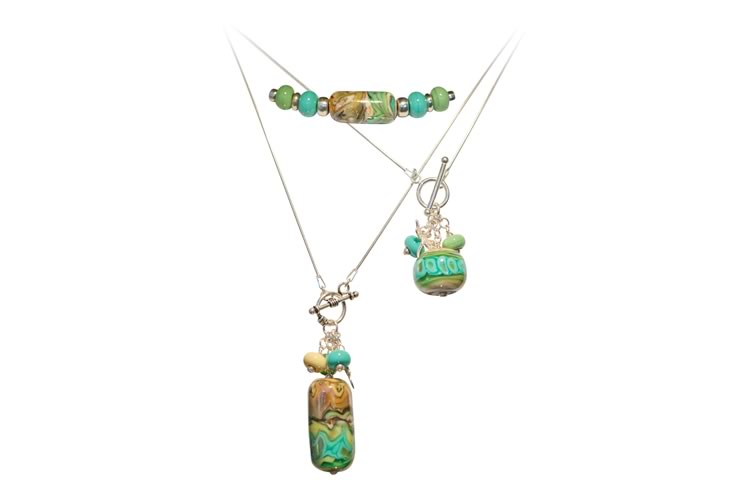
Swirls of colour are a hallmark of Beth’s jewelry designs. Photo by Pete Paterson.
On this day, Beth slowly layers on a variety of colours – blues, greens, a beige and a white – one at a time. She is delighted when she traps a bubble while applying blue glass. “Most lampwork artists would be horrified if they trapped a bubble, but with my end design in mind, this is a bonus.”
Once she has applied the final colour to the bead, she smooths and shapes the molten glass (at this stage, about the size of the tip of a baby finger) by turning it in the flame. Then, in this case, she drops the bead into a press to create the final lentil shape destined to become a pendant for a necklace. From there, the bead, still attached to the mandrel, will go into the kiln that sits next to her worktable and is about the size of a small microwave.
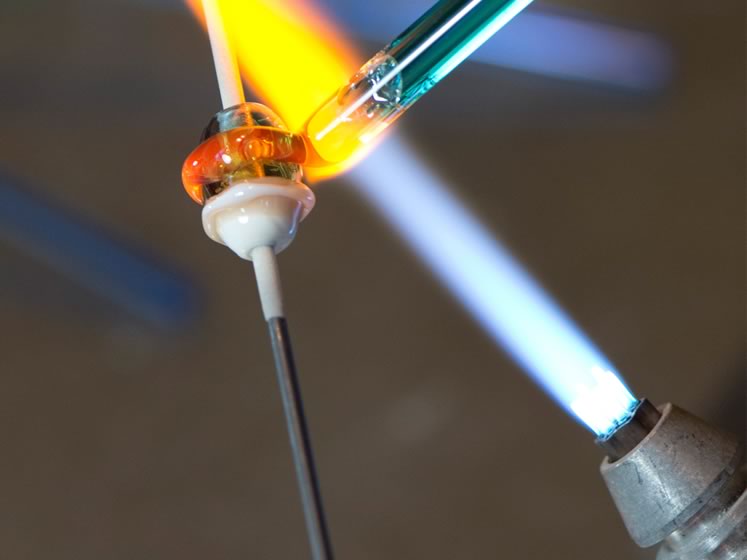
Beth softens a stick of glass in a torch flame as she creates a glass bead. Photo by Pete Paterson.
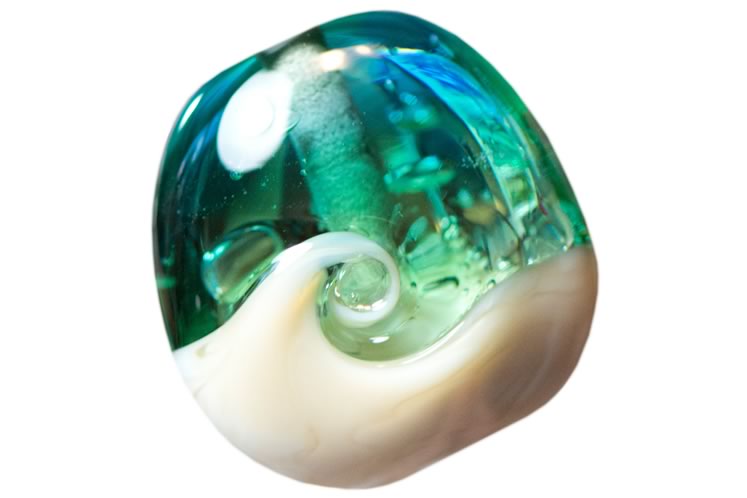
Swirls of colour are a hallmark of Beth’s jewelry designs. Photo by Pete Paterson.
As Beth creates more beads, she will add them to the kiln, which is kept at a temperature of about 920F. She will program the kiln to first raise the temperature to about 960F, then start a gradual cooling process to prevent the beads from becoming brittle or breaking. It will be about seven hours before she can open the kiln to see the finished products.
To keep her studio organized, Beth sorts her creations into categories such as Beach, Wild, Spring Rain and Keele River, named for a Northwest Territories river she has paddled. “Tropical Storm is my first and most popular collection. It features warm shades of aqua, green and turquoise with a few snowflakes mixed in for contrast,” she says.
There’s no doubt northern palettes will continue to show up in Beth’s work. Though the past two years have been quiet because of the pandemic, she plans to get back to her travel guide work for the Hockley-based Canoe North Adventures, which she has been involved in since 2009. In addition to the Keele river, Beth has paddled the Yukon, Horton and Great Bear rivers with clients. This work, she said, “has kept my love of the Arctic real and current, and through that, my creative inspirations flowing.”
Those inspirations have created a bounty of wearable, evocative mementoes for Beth’s clients and fans.
Editor’s Note: Gail Grant is a freelance writer who shares a last name with lampwork artist Beth Grant, though they are not related.
More Info
Related Stories
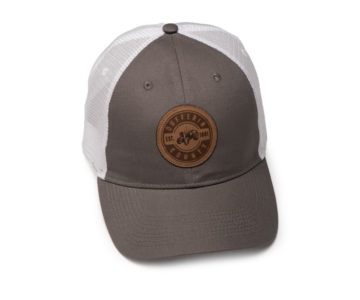
Local Buys: Autumn 2021
Sep 24, 2021 | | Made in the HillsHiking accessories, pressed flowers and a nod to local farming culture.
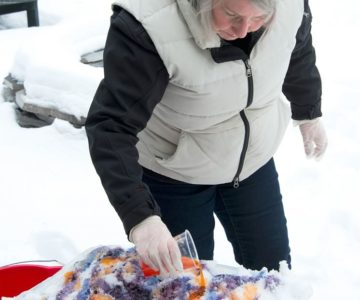
Meet the Maker: Elizabeth Bryan
Nov 29, 2021 | | Made in the HillsThis Orangeville weaver expanded her repertoire by making an outdoor sport of dyeing silk scarves in the snow.
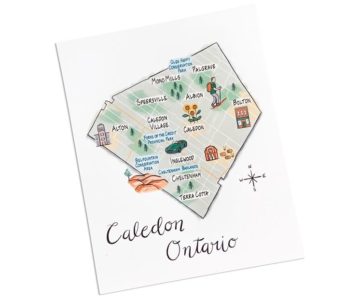
Local Buys: Winter 2021
Nov 29, 2021 | | Made in the HillsCozy knits, chic home upgrades and handcrafted kid presents.

Canoe North Adventures
Mar 23, 2012 | | LeisureTaylor Pace, Al Pace and Lin Ward of Hockley Valley operate Canoe North Adventures and have led 90 expeditions on 21 rivers in the NWT, Yukon and Nunavut.









